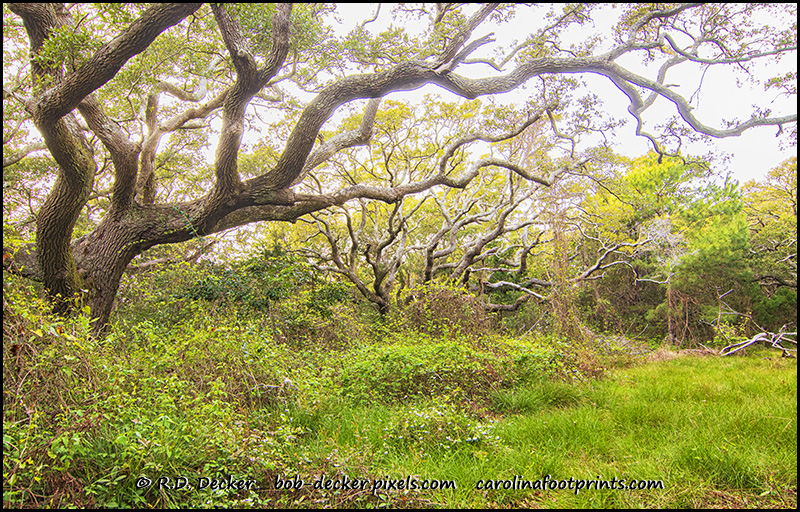I headed to the Hoop Pole Creek Preserve with the intention of making some photos of the Live Oak trees there while capturing video of my process. When I arrived at the parking area I realized I forgot to bring along the microphone system for shooting video. So I ditched to videography idea and concentrated on the photography. I’ll make it a point to revisit and shoot some video for my YouTube channel in the near future.
The Hoop Pole Creek reserve has been the subject of my blog posts before. Last May I penned an article on this lovely little preserve. You can find the post at https://carolinafootprints.com/hoop-pole-creek-the-big-little-trail-in-atlantic-beach-nc/. I’ll mention that the trailhead is found next to the Atlantic Station Shopping Center in Atlantic Beach and suggest you refer to my previous post for more details on the location.
Creating the Images
My goal for the evening was to explore some different points of view and compositions of the more accessible Live Oaks found in the little park. One should never take the attitude that a single trip to a location is enough. There’s always a new discovery to be made or a fresh perspective to be put on previously photographed subjects.
There is a 300 year old tree that is frequently referred to as “the Portrait Tree.” As the name suggests, it is a popular location for taking family pictures and senior photos. It is the easiest Live Oak to get to, adjacent to the trail with a well worn path leading to it. The tendency is to shoot the tree from the side facing the trail. This time I challenged myself to move behind the tree, looking for a large enough hole in the undergrowth to get a photo of the “back” side.
Another area I frequently visit is a low area, frequent flooded with a few inches of water, and surrounded by several Live Oaks. At this location I made it a point to shoot from a low to the ground position, tolerating wet knees in order to frame the composition. There were wild strawberries blooming and in some of the shots I made it a point to try to include them as foreground objects.
In Conclusion
All in all I’m satisfied with the results of this outing. I came away with five or six useable shots. While I had visited the subjects before, I felt the images were pleasantly different than those from my previous visits. Consider referring back to my previous efforts using the link in the text above. You can follow me on Facebook at https://facebook.com/carolinafootprints/ or on Instagram at https://www.instagram.com/bobdeckerphotography/ If you’re interested in purchasing wall art or gifts bearing my fine art photography click on the “Shop” menu link. As always your comments are greatly appreciated.
The Photographs





3 Comments
Great story and images. I particularly liked the one with the beginnings of a sunset behind.
Those huge gnarly oaks are a beautiful photo subject. It’s sad to reflect on how widespread they were in pre-colonial times. Here in Minnesota there’s a movement afoot to restore lost “oak savannas” which once covered 10% of the state.
Bob; Awesome tree work, love the B & W.